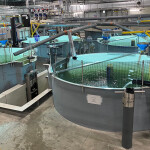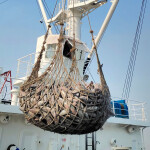A number of challenges including drought, early mortality syndrome and a European Union yellow card, has led to mounting losses and industry contraction in the Asian shrimp farming industry.
Most raw shrimp is sourced from Vietnam, Indonesia, Thailand and India, while processed shrimp comes from Thailand, Vietnam and China.
In the early year, Vietnam suffered a drought that raised salinity in the delta of the Mekong River, damaging around 2,000 hectares (4,932 acres) of freshwater shrimp ponds, and operators idled the use of some ponds due to water shortage and disease concerns. Yet, the country was able to boost exports to USD 374.4 million (EUR 399.4 million), up 24.8 percent for the first quarter of 2016 compared to the same period last year. The gains were mainly due to higher sales to the U.S. and China (including Hong Kong), while exports to Japan fell. Prices were up about five percent year-on-year.
In India, April and May are a closed season for wild shrimp, such as flower, white and brown shrimp, so the price will rise. Large sizes are in short supply.
“We try to import big sizes of wild-catch material, but it is difficult to get above 11-15, 8-12,” one importer said. “A lot of our customers try to keep big sizes of black tiger 4-6 and 8-12, but there is not enough stock.”
As for cultivated shrimp, the Indian season is now in the interval between crops. Cultivation will start again in April, and the price should be steady except for sizes over 11-15. “A lot of customers are changing to 11-15 vannemei from black tiger due to price,” the importer said.
In Japan, a more powerful yen in the early part of 2016 bodes well for demand for the country’s shrimp.
The Japanese currency was as weak as 121 per U.S. dollar in January, but strengthened to 108 per USD on 11 April. High prices in yen terms dampened demand in 2015, but the current trading situation will give Japanese importers more buying power. Japanese imports for the fiscal year through the end of March declined from the previous year, but a strong yen could reverse this.
Thailand continues to be short of material to feed its processing facilities due to slow volume recovery after early mortality syndrome (EMS) hit the industry. The shortage is likely behind Thai Union Group’s proposed acquisition of a 40 percent stake in Indian shrimp processor Avanti Frozen Foods, as India has largely escaped EMS.
In addition to disease, the Thai industry sits under the dark cloud of a European Union yellow card and continuing allegations of slavery in its fishing industry. The yellow card warning was renewed without further measures in January 2016. However, the issue has not gotten much play in Japan. Continued supply recovery is likely to increase Thai exports to Japan, especially if E.U. importers shun the country.
Thai Union has also announced that it is looking at investment in the shrimp industry in Indonesia and Bangladesh. For the former, this seems ironic, since Indonesia has been cracking down on Thai IUU vessels and slave-holding container vessels operating illegally in its waters. Thai Union has in the past been implicated as receiving slave-produced shrimp.
EMS disease also continues to hammer shrimp farming in Indonesia, as it has since 2013, causing large-scale pond closures. Besides losses due to EMS, Indonesian industry giant CP Prima suffered currency exchange losses in dollar-denominated bonds payable by the company after the Indonesian rupiah lost value. Though the company is expecting increased production in 2016, it announced losses of IDR 1.2 trillion (USD 90.5 million, EUR 79.7 million) in 2015, leading its auditor to question its continued viability.






